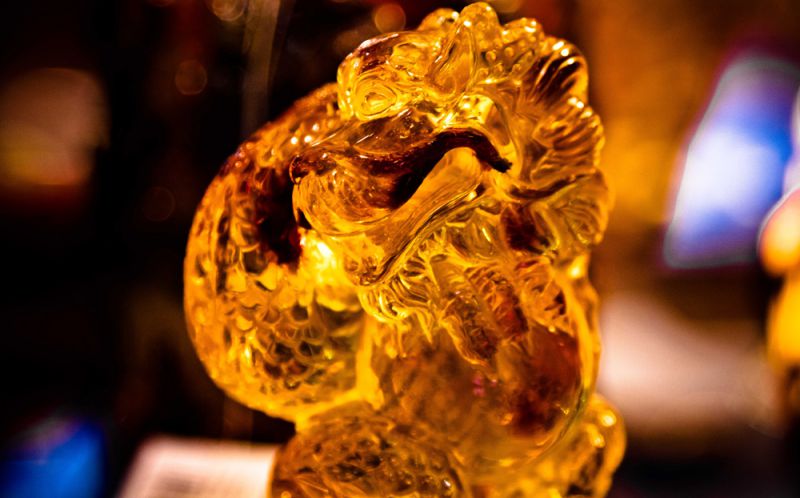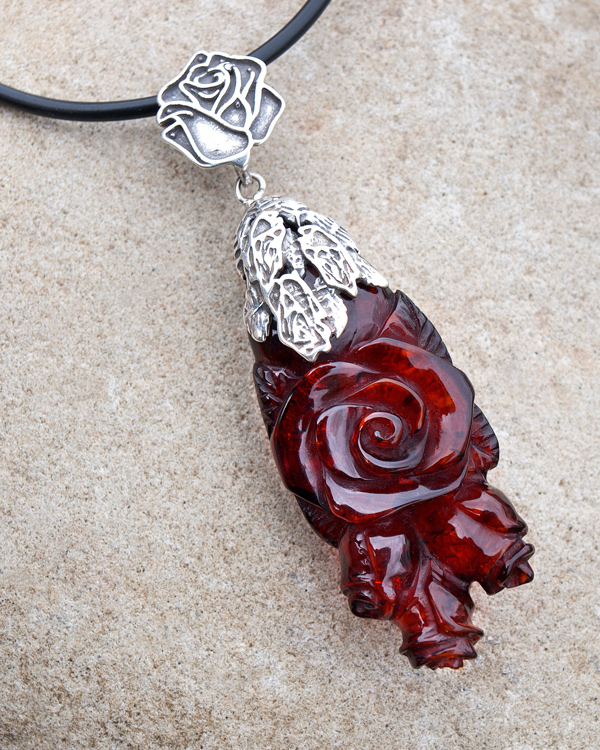|
*materials from ukrburshtyn.com
Carving:
Amber's malleability allows artisans to carve intricate figures, miniatures, and flat or three-dimensional objects from a single stone. This fine plasticity is exemplified in Japanese art, such as Netsuke, where finely carved amber jewelry serves functional purposes like key rings. Carved ornaments reached the height of popularity in the 17th and 18th centuries.
Tools like awls, files, and saws with fine teeth are used for amber carving. Iron scraping attachments for drills can expedite the process. To prevent splitting, the stone is heated before work begins.

Selected amber is shaped using files or electric sharpeners, and then refined with nad files and stitches. Larger cavities are worked on with saws. The surface is polished using pumice powder or silicon carbide, often with specialized tools like linden sticks or hair brushes.
Turning:
Quality amber pieces are transformed into figurines, beads, and cylindrical shapes through turning. The gem is shaped into a rod and then processed at low speeds with cutters and polishing materials. Turned parts include pen handles, candlesticks, and mouthpieces.

Sculpture:
Amber stones with unique beauty but limited jewelry value can be repurposed through sculpture. By observing the stone's natural patterns and playing with light, artisans can enhance its expressiveness with simple tools like cutters and files.
Multiple stones can be combined to create composite compositions. Careful attention to size, color, and arrangement allows each element to shine, radiating light and warmth in the final artwork.
|





